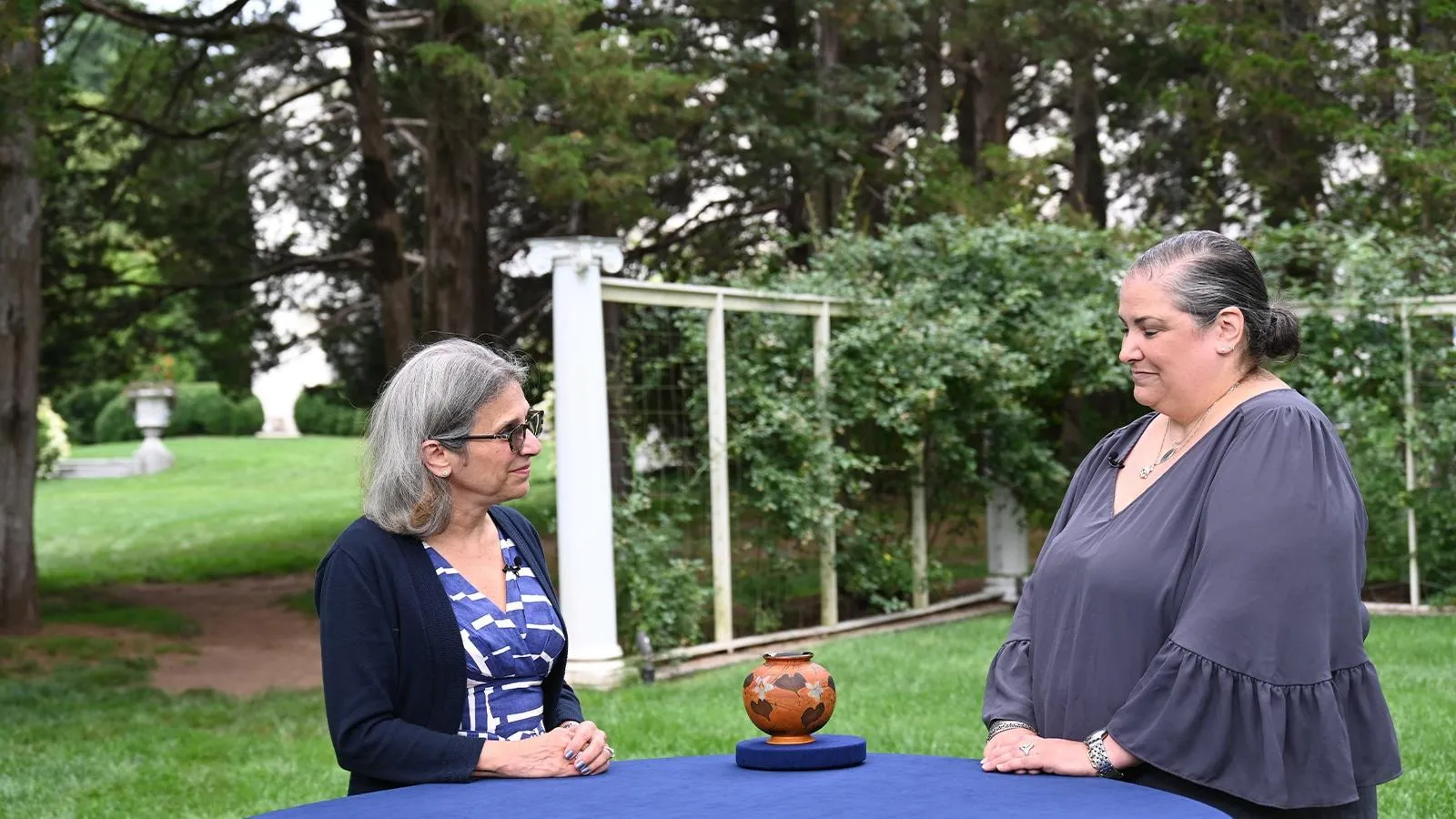GUEST: There's been a lot of family folklore about the painting. We had an aunt that worked at the University of Hartford and it was heard that one of her students gifted it to her, but we're not 100% if that is sure or if the, the painting she actually purchased from the student.
APPRAISER: I see.
GUEST: But I do know it's been in the family for the past 25 years hanging in the dining room.
APPRAISER: Have you ever had it appraised?
GUEST: We did something online ah maybe six or seven months back for a quick appraisal.
APPRAISER: Okay, and what were you able to find out?
GUEST: Worth between $1,000 or $2,000.
APPRAISER: This is Charles Ethan Porter, who was born in 1847, even though there's some question about that. It could be 1849.
GUEST: Right.
APPRAISER: He died in 1923. He's an African American artist. Imagine when he graduates from high school in 1865, slavery was just uh ended with the passage of the 13th Amendment, and Civil War just ended a little bit before that. And of course, the prevailing attitude at the time was that uh "Negroes" weren't really capable of producing art. So he's painting at a time when there was so many obstacles in his way. But he's got a lot of firsts. It's believed that he's the first African American artist to be trained at the National Academy of Design in New York. And they exhibited his work on top of that, not only when he was a student, but a little bit afterwards, as well. He had the support of a lot of people in Hartford, including Samuel Clemens, A.K.A. Mark Twain...
GUEST: Twain.
APPRAISER: ...Twain's wife, Olivia Clemens, Harriet Beecher Stowe, the author of Uncle Tom's Cabin, and his family. His parents, even when he was a teenager, before he, while he was in high school, they would scramble together and got some funds so he could take art classes, which is something very unusual.
GUEST: Didn't he travel to Paris?
APPRAISER: Yes, so he studied...
GUEST: Go over to Paris to study?
APPRAISER: Exactly. That was in 1881, if you can imagine. He was there for three years.
GUEST: Wow.
APPRAISER: He was able to sell some of his pieces. That helped to fund his trip to Paris, for example. When he came back, he was back and forth between New York and Hartford. He ended up dying in his hometown of Rockville, Connecticut...
GUEST: Rockville, yes.
APPRAISER: ...which is not far from Hartford. But Harford was basically his home, so to speak...
GUEST: His home.
APPRAISER: ...and the center of his support system. This particular painting is an oil on canvas. And I would date this probably somewhere between 1875 to 1879, or something, or something like that. So it's after he goes to uh National Academy of Design, but before he goes to Paris.
GUEST: Paris.
APPRAISER: He signed it up at the top left there, "C.E. Porter," which looks very good. The apple here that looks kind of like it's suspended, it kind of draws your eye into it. It's a very nicely done painting and a very good representation of his work. And he's known mostly as a still life painter, even though he did explore other subjects, too.
GUEST: Right, yes, yes.
APPRAISER: So at retail, I think I would put a price of around $25,000 on it.
GUEST: Really?
APPRAISER: Oh, yeah, absolutely.
GUEST: Oh, that is fantastic.
APPRAISER: Yes, yes.
GUEST: I have goosebumps. Being a Hartford artist, I'm just taken back.
APPRAISER: Think about it: in the 19th century, there are not that many African American artists.
GUEST: There weren't.
APPRAISER: And they did-- that did still life.
GUEST: That did still life.
APPRAISER: Or that we even know about. A delicious little painting, though. (laughing)
GUEST: Wonderful.
APPRAISER: I just want to reach in there and grab one of those apples. (both laughing)



